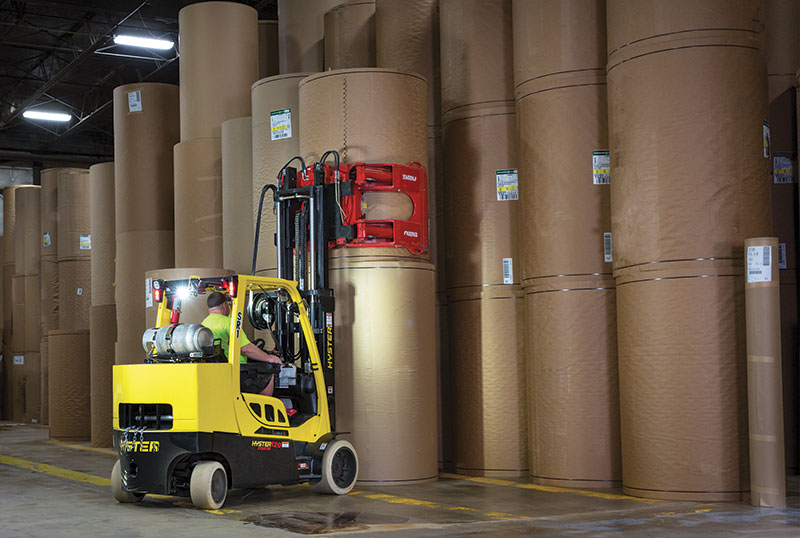Lift Truck Tips: Why lift truck attachment choice matters
As the direct interface to loads and inventory, the right lift truck attachments enhance productivity and safety.
There are many innovations in lift trucks, from autonomous and semi-autonomous options, to new sources of power and battery types. Attachments can get overlooked as a way to increase the productivity of handling larger loads, simply because of all the innovation with the vehicles themselves.
However, proper attachment choice is a decision that has direct impact on issues including operator productivity, safety and reduction of product damage, says John Regan, vice president of sales and marketing for Bolzoni, a global attachments vendor.
“It’s actually the attachment that directly touches the product, making it the ‘product facing’ part of the lift truck asset,” says Regan. “Having attachments that fit with the needs of specific industries and types of products and loads that need to be moved make a real difference.”
For example, side-shifter fork positioning attachments make it possible to adjust the width and spacing of forks quickly, using the vehicle’s hydraulic power capability and a simple lever engagement from the operator position. That saves time, explains Regan, and leaves the forks at an ideal spacing for the load that needs handling.
“With a side-shifting fork positioner, you don’t have to get off the vehicle, you just hit a lever,” says Regan. “There is no need for the operator to try to manually adjust forks, which are heavy steel, or try to leave them unadjusted and try to wiggle the forks into position, which could lead to damage. That is just one example of an attachment type, and how it helps with efficiency and safety, which are key objectives in choosing attachments.”
Some attachments are highly dependent on the type of materials that need to be moved, which is influenced by industry vertical. Carton clamp attachments are commonly used by DCs that need to lift, stack or reposition heavy items in large cartons, like home appliances, or other cube-shaped loads. In the paper industry, paper roll clamps are used to move paper rolls with just the right balance of pressure and grip, says Regan. In DCs that move lumber and construction materials, side-shifting fork positioners are used to adjust spacing for long, heavy items.
Since some attachments have hydraulic elements, bushings or gripping surfaces, they do require maintenance, based on OEM recommendations adjusted for run times and usage levels. Dealers typically can assist an operation with inspecting and servicing attachments on an appropriate schedule, says Regan, and can build attachments into lease arrangements. “Leasing is a good option to explore, because it ensures your operation always has newer equipment,” says Regan.
“Intelligent” systems that can do things like provide vision feeds from camera capability built into the fork tips or sides, or fork attachments with a wireless scale and weighing capability, are a new frontier for attachments. Vision-enabled forks, explains Regan, help operators safely position forks for work at greater rack heights or in poor lighting conditions.
“Fork vision attachments also help reduce the chance of accidentally piercing a load and damaging the goods, which is especially important when moving high-value goods like pharmaceuticals,” says Regan.
Again, explains Regan, the benefits of higher tech attachments like forks with built-in vision or weighing, come back to making operations either more productive or safer. “If you can accurately weigh a load while moving it rather than having to bring it to a separate scale, that saves time,” Regan says.
Some attachments have features that self-adjust without the operator having to do anything. For example, says Regan, some paper-roll clamp attachments now have automatic load sensing so the operator doesn’t have to fine-tune clamp force for different loads.
“I’m seeing an increase in demand for attachments that need minimal operator interaction, through capabilities such as load sensing,” Regan says. “These are intelligent attachments that basically take care of adjusting themselves.”













